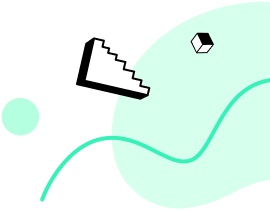Did you hard disk just stop working and you can't quite figure out just what happened? Believe it or not this nightmare situation happens to a lot of people, a lot of times. When it does, it can lead to a lot of panic. A hard drive is after all the most important aspect of your computer and when the data on it is not backed up on any other device, the problem becomes massive. But before you panic, there are several troubleshooting procedures you can try to complete disk file recovery from a dead hard drive. In this article we are going to provide you with 8 methods that you can use to recover data from a hard drive that is not functioning as it should. Let's begin with the best way to recover data from a malfunctioned disk.
Part 1: The Best Software to Recover Deleted Files from Hard Disk
One of the most reliable ways to get data out of a damaged or unresponsive hard disk is to use a data recovery program. As long as the data on the drive has not been overwritten, data recovery tools work very well to get into the drive and recover any data that may be on the drive. There is one disk file recovery software that rises above the rest and has proven time and time again with verified results that it is the best. This data recovery program is known as iSkysoft Data Recovery for Mac (or iSkysoft Data Recovery for Windows) and the following are just some of the features that make it the best data recovery program to help you out.
Key Features of Recoverit (IS):
- Despite the highly specialized nature of the program, it remains easy to use and very fast.
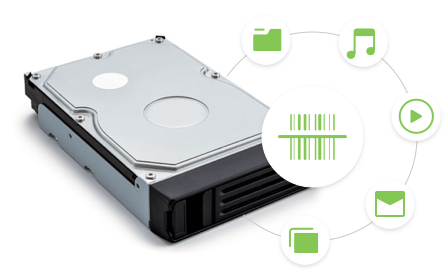
- You can recovery any other type of data including photos, videos and emails among many others by yourself.
- It helps you recover all of your deleted data in the shortest time possible and in the original condition. And it is the safest file recovery tool.
Step-by-Step Guide to Recover Disk File
Begin by downloading and installing the program on your Mac computer. But to maximize the chances that you will be able to recover the data on the hard disk, do not install the application on that hard drive, instead, install it on another drive. This will prevent the data on that hard drive from being overwritten.
Step 1. Launch the program on your Mac and you should see the following primary window with 6 different file type options, you can choose one or more from them and click "Next" button to continue.
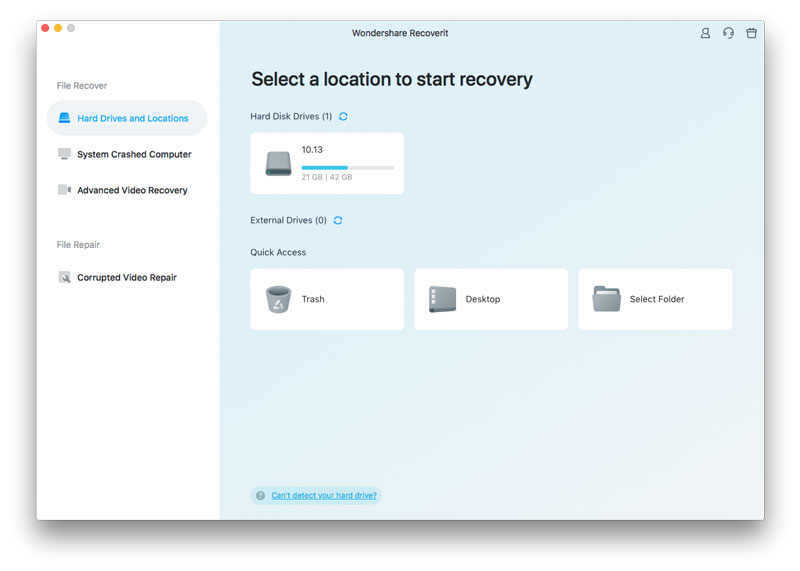
Step 2. In the resultant window, choose the drive that contains the missing data (in this case the hard disk) and then click on "Start" to begin the scanning process. If you don't see the drive, click on "Refresh" icon beside "External Removable Device" and it should appear.
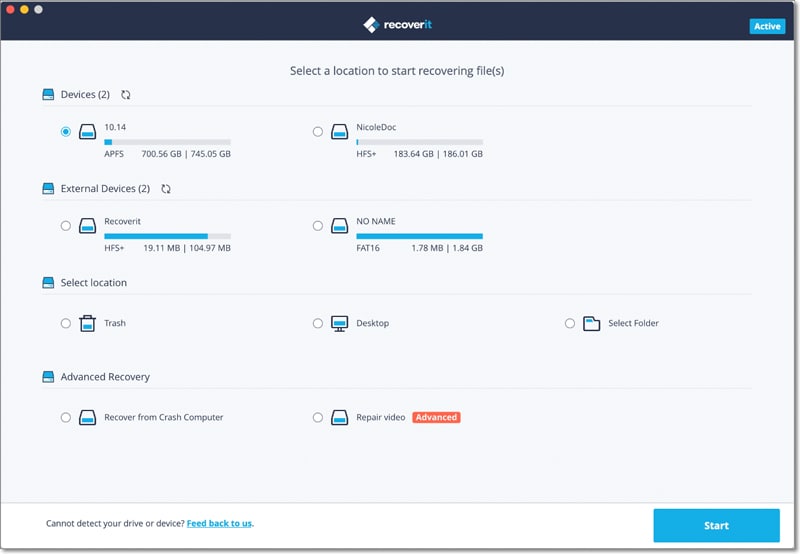
Step 3. Once the scanning process is complete, you will be able to see all of the files on that drive in the next window. Simply select the files you want to recover and then click "Recover".
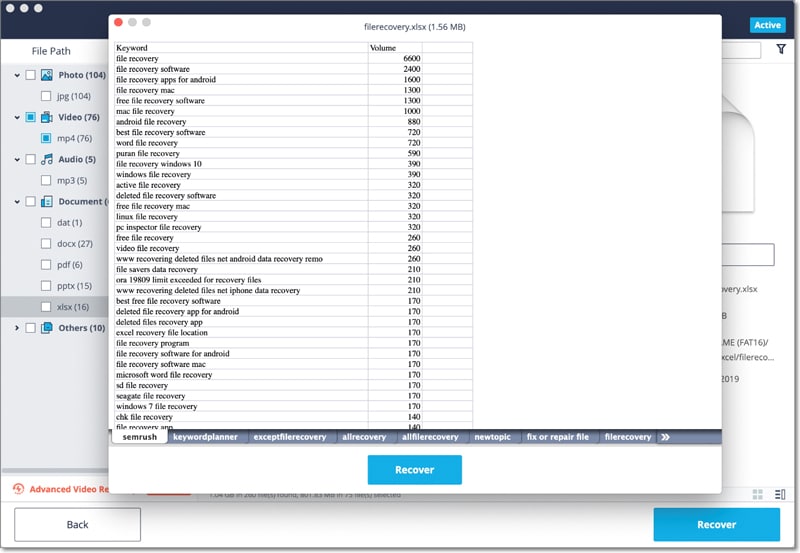
The files will be recovered in a few seconds. Save the files in a different location, preferably an external storage device.
Part 2: 7 Methods to Recover Disk Files
If you would rather not use a data recovery program or this is not an option for you, try one of the following solutions.
Method 1. Begin by Inspecting the Hard Drive for Damage
Sometimes data loss can be as a direct consequence of damage to the drive itself. Therefore, it may be a good idea to check the drive for damage. First stop using the computer and then power down and disconnect the drive or remove it from the computer. Examine the entire drive for damage on the external controller board. If you don't know what to look for, check for any broken parts. If the drive is not damaged in any way, as far as you can see, the problem may be the cables. So, try plugging in the hard drive with new cables both for power and data connection and see if this changes anything.
Method 2. Replace the Drive's Controller Board
Another way to try and fix the drive to recover data from it would be to replace the controller board. Here's how you can do it.
Step 1. Begin by inspecting the drive's controller board to determine if it can be removed without exposing the drive's platters. Most drives can but if this one cannot, skip this method.
Step 2. If you can remove the controller board, go shopping for an exact match of your drive. It is very important the drive you buy be exactly the same as the one you have.
Step 3. Carefully remove the controller board from the failing drive. Begin by removing the screws and be gentle to avoid damaging the connectors.
Step 4. Remove the controller board of the working drive carefully. Finally, attach the working board to the failing drive and then connect the drive to the computer to see if it works.
Method 3. Use Linux to Recover the Data
Sometimes Windows may fail to see the drive because the file system is damaged. In this case, you can try using Linux to recover the data.
Step 1. Begin by taking an image of the hard drive. If you are well versed in Linux, you can use DD to image the hard drive.
Step 2. Next, boot up off a Windows XP installation CD and in the dos prompt used chkdsk to repair the file system. Replace the (DRIVELETTER) with the application drive letter: chkdsk (DRIVELETTER) :/f. This will force Windows try to repair the drive.
Step 3. Mount the drive in a computer that is already running Linux and then download a live disk. Burn the .iso onto a blank CD with an image burner and then boot the computer. Don't forget to change the boot order in the BIOS.
Step 4. Now boot up the Linux system or mount the drive using a Linux live disk and begin a backup of your data if the Linux system can see the file system. You can mount the drive by typing in the command mkdir /mnt/disk && mount -t auto /dev/sda1 /mnt/disk.
Step 5. Now mount another drive and backup the data and then boot into a Linux live disk. Then run the command testdisk /log. Finally, follow find your drive and choose to recreate the partition table.
Method 4. Try Using Photorec
Photorec is a program originally designed to recover lost pictures from memory cards of digital cameras and even hard disks. It bypasses the file system and instead looks for the file headers which are the first part of files that tell the OS what kind of file it is without having to read the file extension. Using Photorec is not as easy as using other data recovery programs such as Recoverit (IS) but it can be reliable in its own right. You also need to be Linux- savvy to use it. But it is worth checking out to see if it can help.
Method 5. Try Whacking It
If your computer recognizes the drive as a USB device but there is no drive letter and it seems to be initializing only for it to stop suddenly, then the head could be stuck. Try giving it a hard hit on your hand or a narrow edge near the cable connector to try and get it free. Reconnect it again to the computer and with any luck, the computer should recognize the drive and you should be able to see all of your files. We should tell you that doing this could cause data loss as the head may scrape the platter.
Method 6. Try Squeezing It
If nothing has worked thus far, you may want to try squeezing the drive. Hold the drive really tightly and press in with your fingers, palms and thumbs. But you need to be very careful not to bend any of the jumper pins. If the drive was loose, squeezing the case will hold it together long enough for you to get your data back. You can have someone else backup your data while you squeeze the drive. This may take a while but if you really want your data back and nothing else works, you may have no option but to try it.
Method 7. Freeze It
If your problem is not that the drive is loose, then it could be over heats and the center shaft may have expanded and is stuck to its bearings. Freezing it may allow the materials to shrink and give the shaft more clearance to turn. To do this, place the drive in a re-sealable plastic back to keep moisture from causing further damage and then place the drive in the freezer for up to 2 hrs.
Remove the back from the freezer and if the drive operates normally, create a bootable backup in a second, external hard drive. Please note that this method could cause severe data loss as temperatures under 5C can cause the magnetic platters to demagnetize.
Most of these seven methods may work but many may cause even more damage than good. Your best bet is probably to use a data recovery program such as Recoverit (IS) for Mac. Just be careful not to completely overwrite the data on the drive or you may not be able to recover it at all, don’t use the drive until you have taken steps to recover the data.


